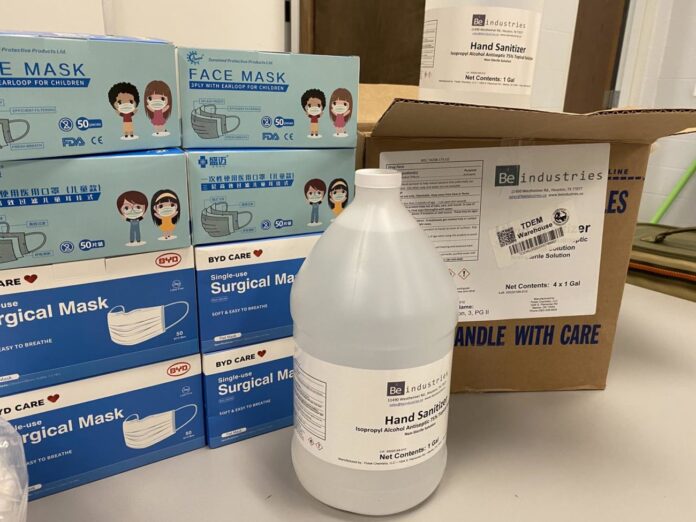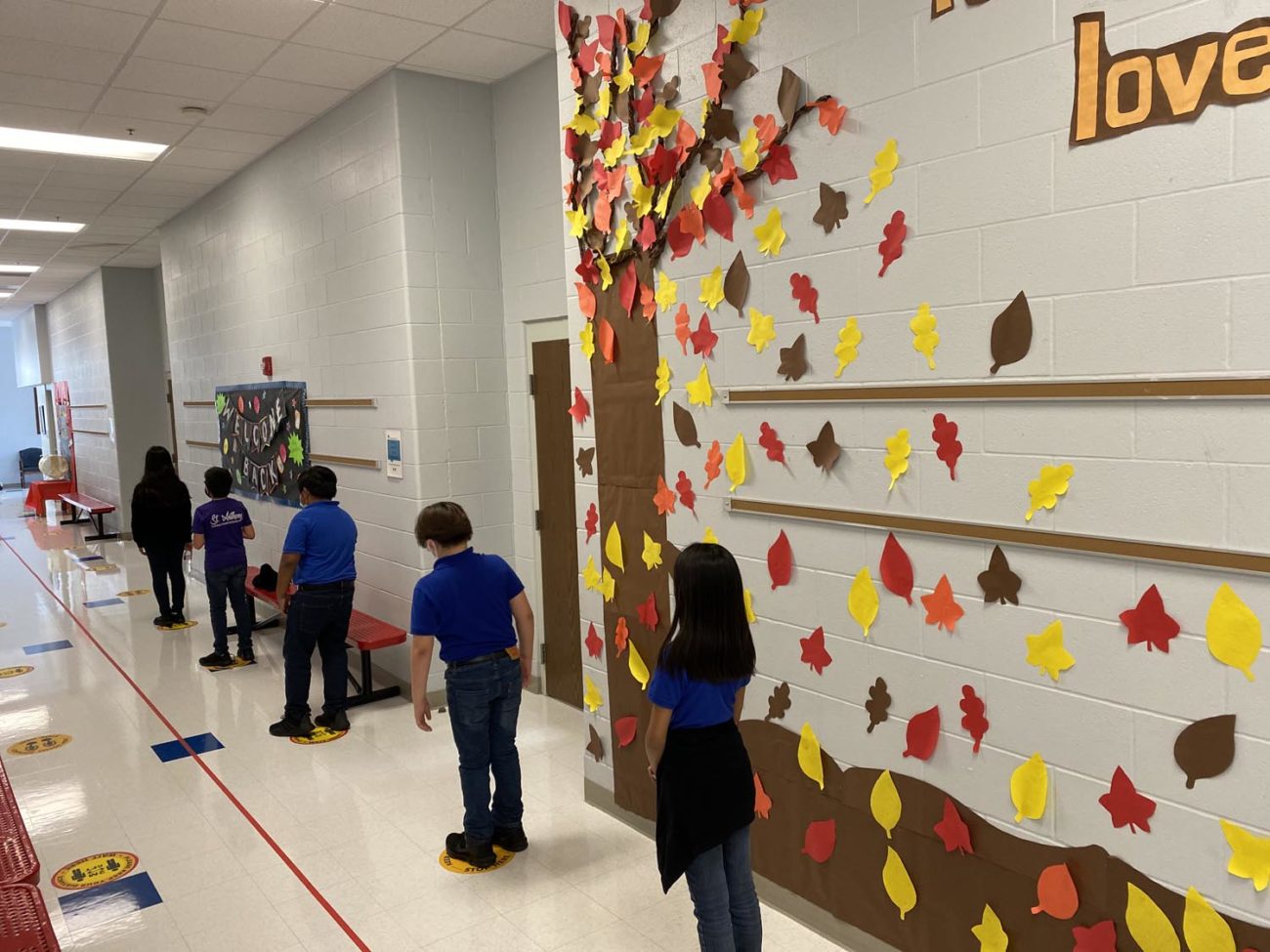HARLINGEN — He gets it.
Evan Cabrera is only 11 years old, but he understands full well the importance of a new rapid response COVID-19 test now in use at St. Anthony’s Catholic School where he attends sixth grade.
“They’re pretty good,” Evan said. “We can just go in and test and see if any of us has COVID, but hopefully none of us will get it anytime soon.”
St. Anthony’s applied for the COVID-19 Rapid Testing Program which was piloted by eight school districts across Texas, including Harlingen CISD. The test gives results in 15 minutes as opposed to previous testing which took several days.
“As soon as it became available to private schools we made the application process and we were accepted,” said Principal Kathy Stapleton.
“We’ve had it now about a couple of weeks,” Stapleton said. “It’s working out well. It’s all voluntary. Faculty and staff, we can get tested here on campus, we have an isolation room. Two of the staff members have been trained and certified to administer the test.”
Students can also be tested with permission from parents.
Teachers and parents appreciated the peace of mind.
“They give an additional safety measure for our children and our staff,” said Dr. Elizabeth Juarez, whose son Hugo attends third grade at St. Anthony’s.
“He’s adapting very well,” Juarez said. “Children are pretty resilient once you explain to them the situation about wearing your mask, social distancing, and washing hands, sanitizer. He is happy with his classroom. He understands that certain things must be done because of the pandemic.”
Juarez is an internal medicine physician at Rio Grande Regional Hospital, so she’s keenly aware of the current health crisis and it’s implications. She commended St. Anthony’s for implementing a health care committee before beginning face-to-face learning. The committee’s purpose was to ensure safety protocols, such as social distancing and the wearing of face masks, were implemented before the kids entered the classrooms.
“This rapid test only adds to those safety measures to make sure that our children continue to learn in the safest environment possible in this pandemic,” she said.
Janet Gracia teaches second grade at St. Anthony’s. She’s glad people can now get tested at the school and get fast results. Not like before.
“If we had to go get tested we had to go to the doctor’s office and get tested elsewhere,” she said.
Fortunately, none of her students have had to be tested.
“Everything’s been going wonderful,” she said.
The test has only been administered to three individuals, all of which came back negative.
The school, which serves pre-K three to sixth grade, was already implementing extensive safety protocols before the new tests arrived.
“We’ve got it all marked out,” Stapleton said. “We’ve got spots on the floor that indicate six feet distancing. So, the students know when they’re in the hallway that they line up on their spots.”
Students, faculty and staff are all wearing face masks, and the school has gridded out the classrooms to keep desks six feet apart. Students understand the need to remain at their desks and not get too close to classmates or teachers.
And, there’s something else.
The school has installed three-sided plastic sneeze guards around each desk. Dr. Ameer Hassan, head of the neuroscience department at Valley Baptist Medical Center, has said that schools offering in-person learning should have Plexiglass around desks. Plexiglass is prohibitively expensive for many districts, but St. Anthony’s has purchased plastic screens as an added measure of protection.
About half of St. Anthony’s are zooming in while the rest are engaging in face-to-face instruction.
“It’s selective, parents have a choice,” Stapleton said. “We’re at capacity on what we can hold based on the six feet distancing. We have some classrooms that we have some room in, but we capped them early so that we didn’t have more kids on campus than we had space for.”
Some students who had previously been tuning in to class remotely have begun trickling back to class, and Stapleton believes that change is due at least in part to the new rapid testing.
“It gives us a sense of confidence,” she said. “We know that if something were to happen we could respond quickly rather than waiting the ten days for the results to come back. We can respond immediately. It’s a good feeling to know we have that ability.”








